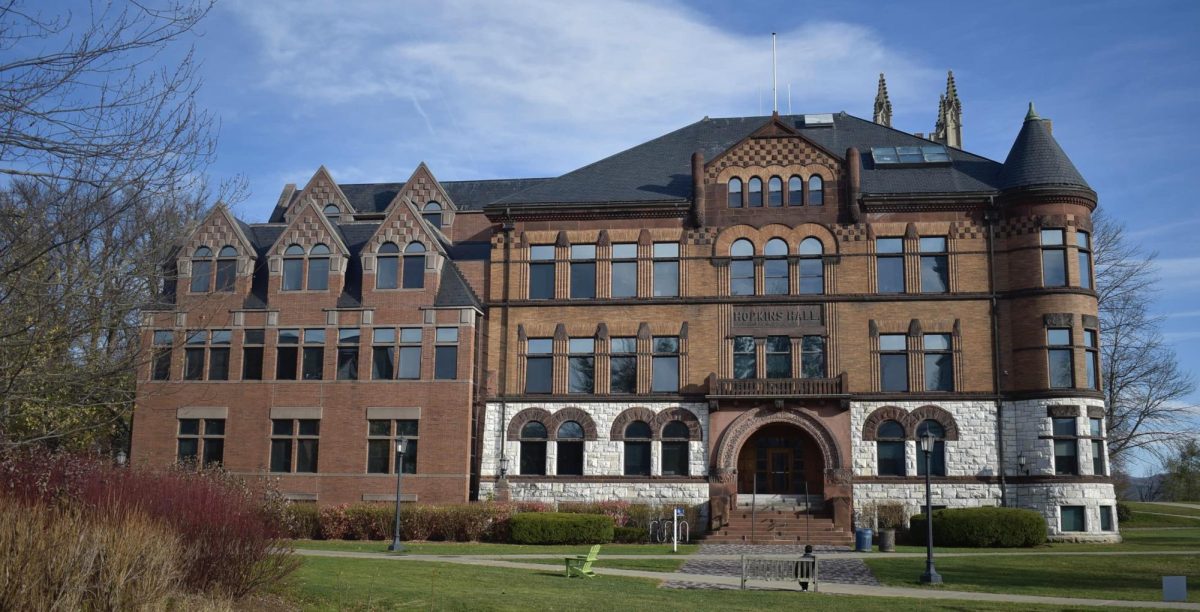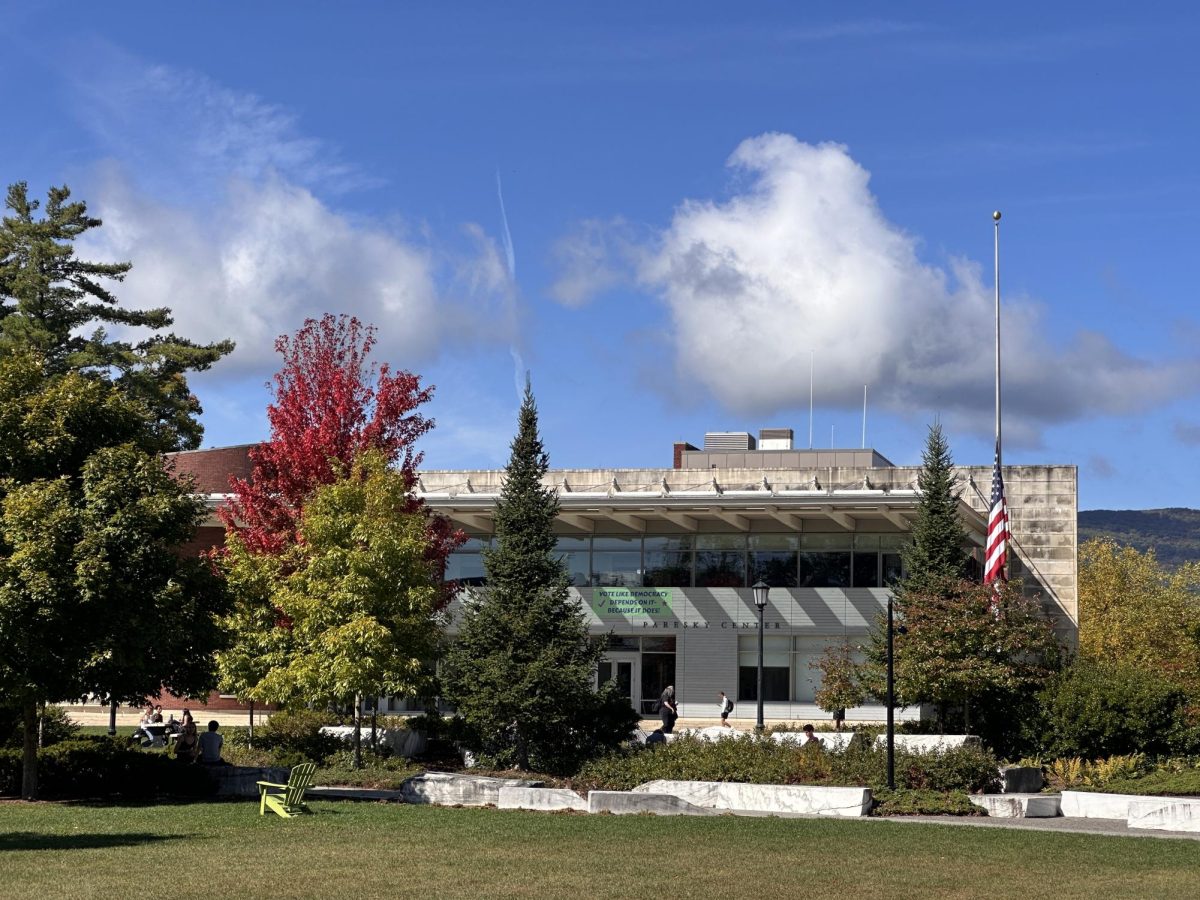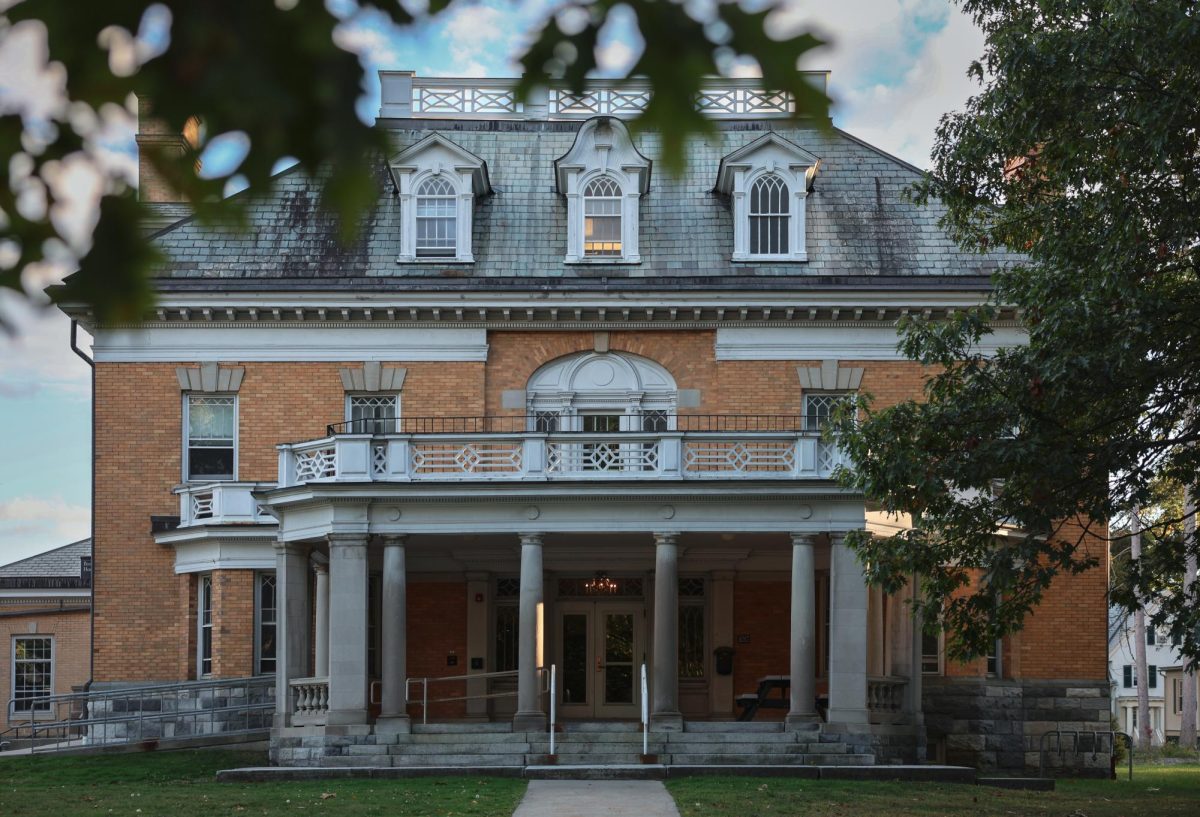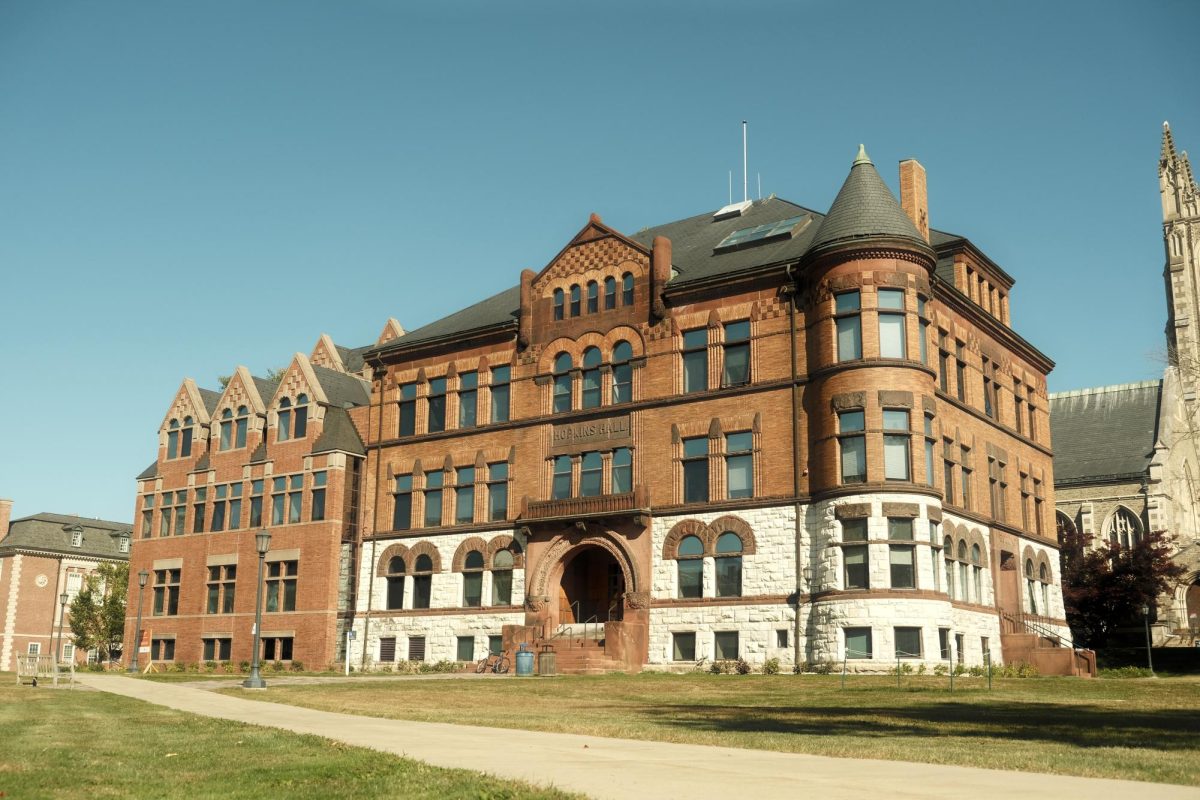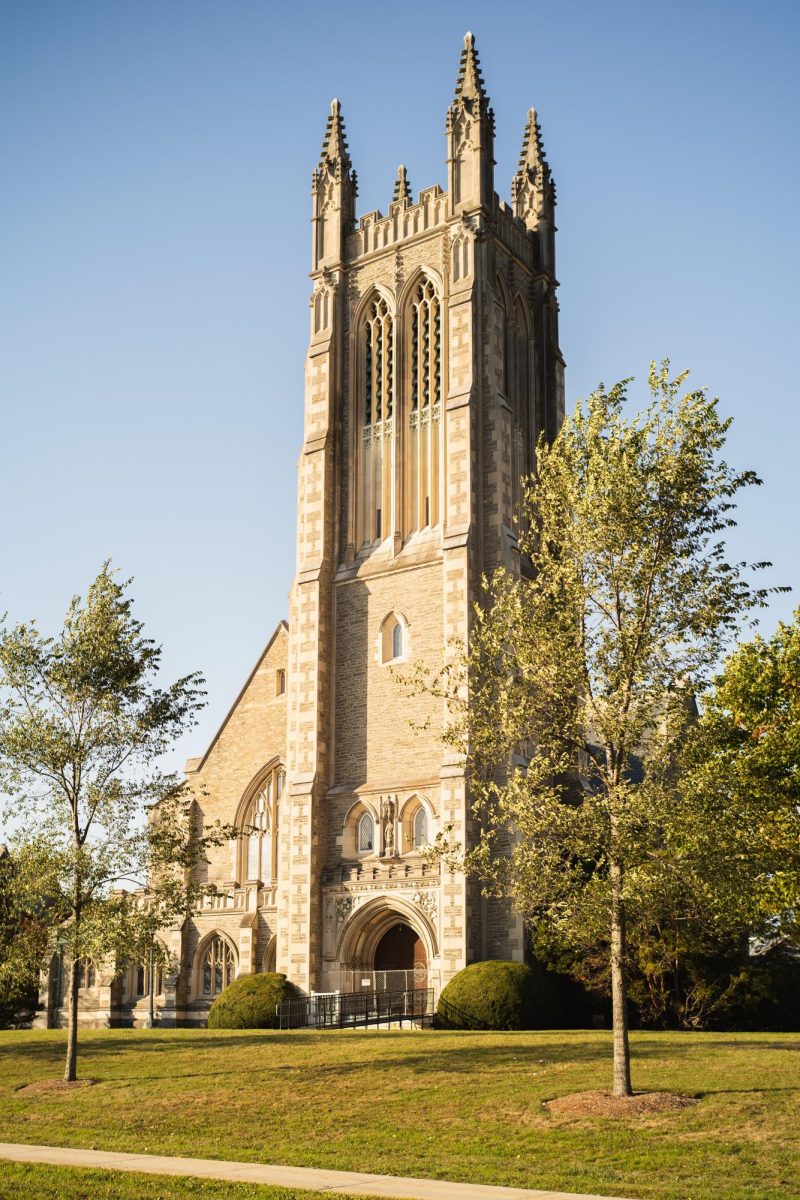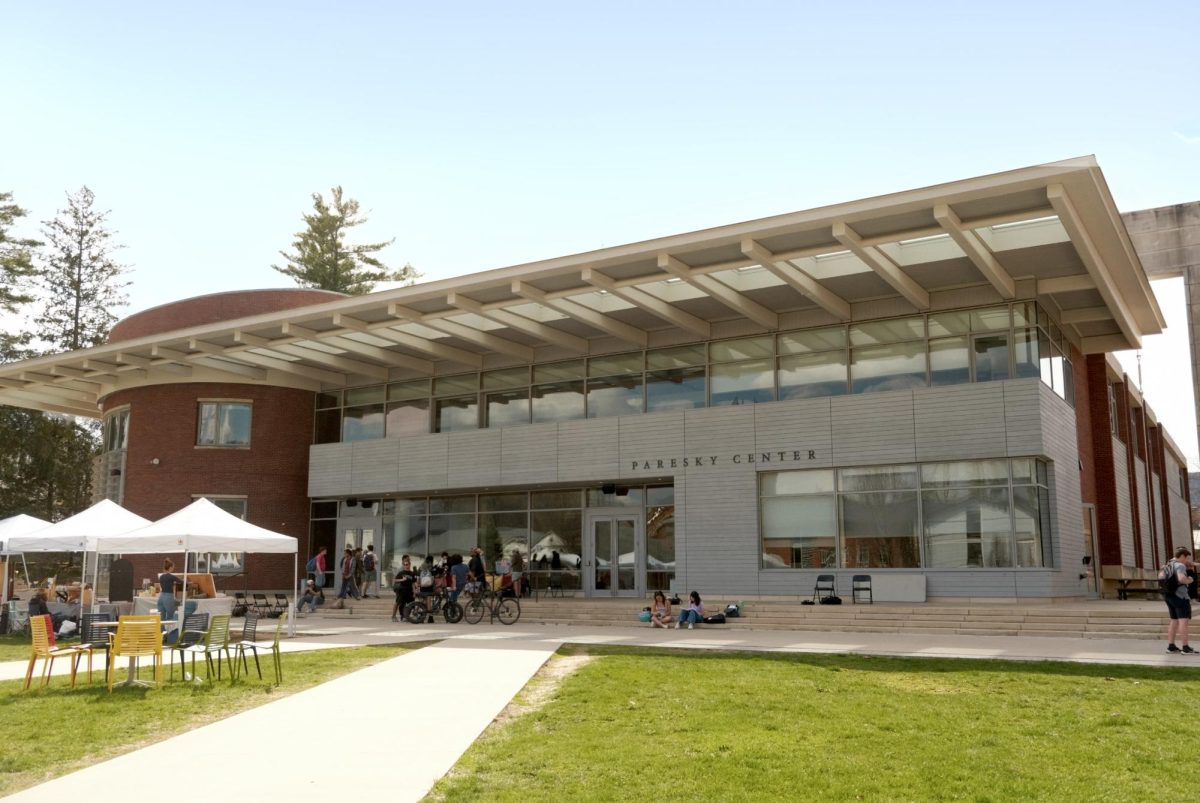
Professor of Anthropology Peter Just arrived at the College in 1988, the same year Hopkins Hall underwent a major interior renovation. “When it was [re]opened, almost all of the rooms in that building were classrooms,” he said in an interview with the Record. “Now, almost none of them are — a lot of classrooms got replaced by a lot of administrative offices.”
Just’s observation reflects a major shift at the College in recent decades: a significant growth in administrative personnel. Non-faculty, salaried employees — such as lab technicians, art curators, and departmental administrative assistants — now represent a larger fraction of the College’s total workforce than at any point in the College’s history.
Since 2009, headcount at the College has grown fastest among exempt staff — administrative personnel who are paid annual salaries rather than an hourly rate.
As of 2024, the number of full-time equivalent (FTE) exempt staff positions had increased from 290 to 443 since 2009, according to data from the provost’s office. Under this measurement, two half-time employees count as one full-time position.
The growth of administrative staff has outpaced faculty growth — FTE faculty positions at the College increased by 13 percent between 2009 and 2024, while the number of administrative staff FTE positions increased by 53 percent.
Several factors have contributed to the rise in the number of administrative positions at the College, chiefly the provision of more student and faculty support services and the government’s increasingly complex regulatory requirements, according to Eiko Maruko Siniawer ’97.
This trend is not unique to the College. Institutions of higher education across the country have seen similar growth in administrative personnel. Compared to other liberal arts colleges, however, the College employs slightly more non-faculty staff per student. In 2016, the College had a student-to-staff ratio of 3.2, meaning the College employed one staff member for every 3.2 students. Bowdoin tied with the College for the lowest student-to-staff ratio, but other peer institutions employed fewer staff relative to their student populations. For instance, Wesleyan employed one for every 5.3 students, according to the College’s 2016 Report on Staffing.
The College is hoping to publish an update to this report on staffing in the near future, according to Provost Eiko Maruko Siniawer ’97. “An updated report would show that staffing levels have plateaued recently, reflecting the high level of support that the College has come to provide,” she wrote.
For Just, the high level of support at the College today looks completely different from his experience as a first-generation undergrad at the University of Chicago. “Nobody supported me at all — I managed to find my way,” he said. “That ethos has really changed. I’m not judging whether that’s for the better or for the worse, but it is for the more administrative.”
More student support
Siniawer noted that expanded student support has accounted for much of the growth in administrative staff at the College. Integrative Wellbeing Services (IWS), Dean of Students and the Office of Campus Life, the ’68 Center for Career Exploration, Student Financial Services, and the Williams College Museum of Art have all seen growth in staffing to increase support for students, according to Siniawer.
“Staffing in Health and Integrative Wellbeing Services has almost doubled over the last twenty years,” she wrote in an email to the Record. “The Office of Accessible Education (OAE) came into being during this same period.”
Established in 2016, OAE coordinates accommodations and support for students with disabilities. OAE, which has three full-time staff positions, serves over 20 percent of students and serves an essential function at the College, according to Interim Director of Accessible Education Katy Evans.
“We do this both to help the College meet its legal obligations under federal and state disability rights laws and to further our goal of creating an inclusive learning environment for all,” Evans wrote in an email to the Record. “This way we can help create a campus community where all students feel they can show up as their full selves.”
Professor of Economics Emeritus Ralph Bradburd, who arrived at the College in 1976, said that the College’s increasingly diverse student body has necessitated an expansion of support. “Because you have a much more diverse student body, with more diverse needs, you’re going to need more people who provide various sorts of student support services,” he said.
In 2002, students on financial aid comprised 40 percent of the student body; today, 53 percent of students receive need-based financial aid. “The College has made a concerted effort over the past 15 to 20 years to attract really high-need students,” Bradburd said. “Those students are going to need a greater level of support in navigating financial challenges.”
Evolving student interest and needs have also contributed to growth in administrative staffing. “Growth in the Center for Learning in Action (CLiA), the Zilkha Center for the Environment, and the Office of Institutional Diversity, Equity, and Inclusion are a few examples,” Siniawer added.
For some students, the support from these offices has been the highlight of their experiences at the College. Fanely Caba ’25 was drawn to the College by the Volunteer Income Tax Assistance program sponsored by CLiA and began working with CLiA her first year. She is now president of the Lehman Community Engagement group, which, with CLiA’s support, helps connect students to local volunteering opportunities.
“If it weren’t for CLiA’s commitment to bridging the purple bubble, [college] would have definitely been a harder transition for me,” she said. “I definitely appreciate what they all do.”
However, other students have found that the growth in administrative functions has created hurdles that stifle students’ autonomy. Olivia Winters ’25, a leader of the College’s crochet and knitting club, noted that the Office of Campus Life (OCL) has made it difficult to host club events, such as workshops with local artists. “I was dissuaded from hosting these kinds of activities because of OCL’s rule … that requires 45 days’ notice to bring an outside speaker,” she wrote in an email to the Record.
Associate Director of Student Involvement Sam Boyden addressed the 45 day policy. “The reason the timeline is 45 days is because contracts need to be reviewed and sometimes edited by OCL and College legal counsel to ensure compliance with college policy and relevant laws,” he wrote. “These contracts are also legally binding documents and require more scrutiny than a traditional on campus event.”
Winters wishes that students could operate without as much administrative oversight. “Less regulation would make student leaders’ jobs easier, more fulfilling, and would contribute to a more robust social scene at the College,” she wrote.
More faculty support
In addition to expanded student services and evolving institutional priorities, Siniawer noted an increase in staff who support faculty. The College has increased the number of technicians in the arts and sciences departments, curators at the museum, librarians, and staff in the Office for Information Technology (OIT).
“When I came to Williams, we had one computer,” Bradburd said. “Now, you’ve got to have an enormous amount of IT support, because every faculty member has a computer, and people have other kinds of equipment.”
Some administrative work, Just noted, used to be completed by faculty on a rotating basis. For instance, faculty would rotate fulfilling the responsibilities of the Dean’s Office, but today the Dean’s Office employs more full-time administrators. “Faculty would perform duties in the Dean’s Office, such as the dean of first-year students, and then return to teaching full time” Just said.
The College also provides child care for faculty. Prior to 2008, the College outsourced its daycare needs, but when the College brought the Children’s Center in-house, it added 22 FTE administrative staff positions, according to the College’s 2016 Report on Staffing.
The Rice Center for Teaching is one of the most recent additions of faculty support personnel. The College created the Rice Center in July 2022, after the 2021 Williams College Strategic plan articulated the need to create a space to “advance faculty teaching and student learning,” Biology Professor and Faculty Director of the Rice Center Matt Carter wrote in an email to the Record.
Unlike other administrative positions, the Rice Center is fully funded by an endowed gift from Joseph Lee Rice III ’54. Its working members consist of the faculty director, who has a reduced course load, three faculty fellows, one full-time staff associate director, and a half-time administrative assistant, according to Carter. “The Rice Center adds tremendous value to the College community by advancing effective teaching and promoting student learning and growth,” Carter wrote.
For Just, though, it’s unclear what the Rice Center does, and whether it was a necessary addition to the College. “It’s nothing that anybody was asking for. Why do we have it? I’m not sure,” Just said. He added, however, that he believes the staff in administrative positions and at the Rice Center are working hard to add value to the College.
More government requirements
Increasing levels of government reporting and compliance requirements have driven an increase in administrative staff, according to Siniawer and the 2016 Report on Staffing. “The federal, state, and local laws governing our work are too numerous to list, but range from sweeping federal regulations like [Family Educational Rights and Privacy Act] to local ordinances like building codes,” the report states. “The unglamorous but crucial task of complying with these laws often falls to staff, in numerous offices across campus.”
Most of this greater administrative burden is spread out among employees, but in some cases, government regulation has required the College to dedicate full-time positions to ensure compliance. The 2016 staffing report notes that, in the prior decade, the College had been required to hire a Title IX coordinator, as well as a full-time staff member dedicated to compliance with the Clery Act. “Today, compliance with that complex set of laws requires someone’s dedicated attention,” the report states.
Increases in government reporting requirements and regulations have also added personnel in the Title IX Office, Human Resources, the Investment Office, and the Grants Office, Siniawer stated in an email to the Record.
Accreditation by the New England Commission of Higher Education also takes up administrative staff time across many College departments, according to the Report on Staffing.
For Just, the growth in administrative staff goes beyond the essential function of the College, noting that he believes the staff in administrative positions are working hard to add value to the College. “How do you define the necessary? I come back to the notion that if you want to graduate from Williams, you have to successfully complete 32 courses,” he said.





